Dearg-Due Frightening Female Demon And Tyrannical Abhartach Of Irish Folklore
Ellen Lloyd - AncientPages.com - People have always believed in vampires. This very old belief was deeply held in the Celtic culture and very widespread in ancient Europe. People believed in the existence of the "undead" who harm after the death of the living.
The ancient Celts had many deities, but as with most ancient cultures, they also feared evil forces and had many stories about them. One of the most frightening creatures, originally from Ireland and associated with the Celtic culture, is Dearg-due (or "Red Blood Sucker").
An ancient Irish vampire legend about Dearg-due is one of the most frequently told. Dearg-Due can be traced back to the place where she was buried, namely, near Strong bow’s Tower in Co. Waterford, Ireland.
She was a very beautiful young woman, the daughter of the local tribal chief. She fell in love with a local peasant, but this relationship was unacceptable to her father, who forced her to marry a much older, rich, and very abusive man, who treated her badly. The young woman committed suicide and was buried underneath Strongbow’s Tree in Waterford.
The legend says that one night - years after the burial - she rose from her grave and returned to the realm of the living. She decided to seek revenge on those who had ruined her life, namely her father and husband, by sucking their blood until they dropped dead. With revenge taken, the woman finally found her peace.
According to another version of this dark story, the woman took on the appearance of a frightening Dearg-Due, who rose usually grom the grave once a year to lure men from surrounding villages to their deaths, by using her charm and beauty.
The memory of this bloodthirsty creature goes long way back to the Celtic tribes, and to this day, Dearg-due is still a terrifying figure.
Abhartach - Tyrannic Undead Monster In Irish Beliefs
The blood-thirsty female vampire, Dearg-Due has a companion in Irish folklore; his name is Abhartach, one of the greatest villains living in ancient Irish beliefs.
The legend about this tyrant who enjoyed terrorizing people has still enough power to strike fear into many people who believe in his existence.
When he finally died, he became a Neamh-Mairbh, commonly known as one of the undead (also known as a revenant, a visible ghost or animate corpse, which was believed to rose from the grave to terrorize the living in his vicinity.
There are many stories of such creatures who arose in Western Europe (especially Great Britain and were later popularized by Anglo-Norman invading forces in Ireland, during the Middle Ages.
In old Irish Celtic mythology, they are called "neamh mairbh" who return from their graves to harass their surviving members of their families and neighbors.
Even as a dead man, Abhartach (also 'avartagh', Irish for a dwarf), no longer had just the power to kill, he could drain his victims of their blood.
His terror had no limits, but people, although they were terrified, they decided to fight back.
The sword was made of Yew wood and, as the legend says, it was driven through his heart. Then to make sure he was really dead, his once-loyal followers buried him upside down, and he was never heard of again. It is said that to this day, after nightfall, locals avoid the place where it happened - just in case.
Written by - Ellen Lloyd – AncientPages.com
Updated on April 6, 2024
Copyright © AncientPages.com All rights reserved. This material may not be published, broadcast, rewritten or redistributed in whole or part without the express written permission of AncientPages.com
Expand for referencesReferences:
More From Ancient Pages
-
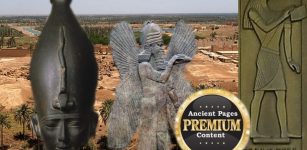 Surprising Ancient Secrets Of The ‘Second Thoth’ And God Osiris
Ancient Mysteries | Sep 27, 2018
Surprising Ancient Secrets Of The ‘Second Thoth’ And God Osiris
Ancient Mysteries | Sep 27, 2018 -
 Templo Mayor – Sacred Aztec Complex Dedicated To Gods Tlaloc And Huitzilopochtli Who Were Usually Appeased With Human Sacrifices
Featured Stories | Jan 23, 2018
Templo Mayor – Sacred Aztec Complex Dedicated To Gods Tlaloc And Huitzilopochtli Who Were Usually Appeased With Human Sacrifices
Featured Stories | Jan 23, 2018 -
 Mystery Of Ancient Roman Concrete That Still Stands Strong – Has A 2,000-Year-Old Engineering Puzzle Been Solved?
Ancient Technology | Jul 5, 2017
Mystery Of Ancient Roman Concrete That Still Stands Strong – Has A 2,000-Year-Old Engineering Puzzle Been Solved?
Ancient Technology | Jul 5, 2017 -
 Mysterious Death Of Amy Robsart – Murder, Accident Or Suicide?
Featured Stories | Jun 20, 2024
Mysterious Death Of Amy Robsart – Murder, Accident Or Suicide?
Featured Stories | Jun 20, 2024 -
 Ancient DNA Yields Surprising Findings On World’s Earliest Seafarers
Archaeology | Jun 30, 2022
Ancient DNA Yields Surprising Findings On World’s Earliest Seafarers
Archaeology | Jun 30, 2022 -
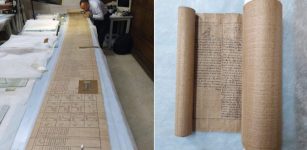 Never-Before-Seen 16 Meters Long Ancient Egyptian Papyrus Unveiled To The Public
Artifacts | Feb 21, 2023
Never-Before-Seen 16 Meters Long Ancient Egyptian Papyrus Unveiled To The Public
Artifacts | Feb 21, 2023 -
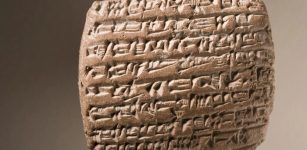 Locations Of 11 Lost Ancient Cities Revealed On 4,000-Year-Old Artifacts
Archaeology | Nov 15, 2017
Locations Of 11 Lost Ancient Cities Revealed On 4,000-Year-Old Artifacts
Archaeology | Nov 15, 2017 -
 Frightening Hockomock Swamp: Unexplained Vanishings, Encounters With Unknown Creatures, And Ancient Mysteries
Featured Stories | Dec 5, 2024
Frightening Hockomock Swamp: Unexplained Vanishings, Encounters With Unknown Creatures, And Ancient Mysteries
Featured Stories | Dec 5, 2024 -
 Ancient Burial Tomb Of A Noble Mongol Warrior With Weapons Unearthed In The Moldavian Village
Archaeology | Aug 9, 2022
Ancient Burial Tomb Of A Noble Mongol Warrior With Weapons Unearthed In The Moldavian Village
Archaeology | Aug 9, 2022 -
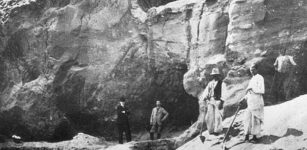 Neanderthals Decorated Their Caves With Rocks 130,000 Years Ago – Find At Krapina Site Reveals
Archaeology | Jan 19, 2017
Neanderthals Decorated Their Caves With Rocks 130,000 Years Ago – Find At Krapina Site Reveals
Archaeology | Jan 19, 2017 -
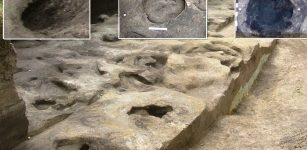 Sensational Discovery: 300,000-Year-Old Snapshot – Oldest Human Footprints From Germany Found
Fossils | May 12, 2023
Sensational Discovery: 300,000-Year-Old Snapshot – Oldest Human Footprints From Germany Found
Fossils | May 12, 2023 -
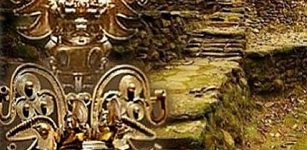 Mysterious Lost City Of The Tairona Hidden In The Jungles Of Colombia
Civilizations | Nov 9, 2018
Mysterious Lost City Of The Tairona Hidden In The Jungles Of Colombia
Civilizations | Nov 9, 2018 -
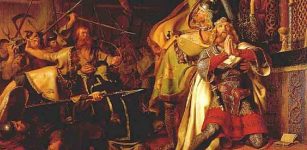 Thousand-Year-Old Sarcophagus Discovered In Odense
News | Sep 28, 2015
Thousand-Year-Old Sarcophagus Discovered In Odense
News | Sep 28, 2015 -
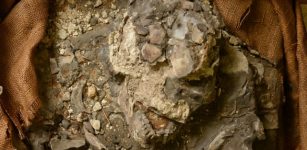 Extraordinary 6,500-Year-Old “Noah” Skeleton Re-Discovered – A Survivor Of The Great Flood Hidden In Museum
Civilizations | Aug 6, 2014
Extraordinary 6,500-Year-Old “Noah” Skeleton Re-Discovered – A Survivor Of The Great Flood Hidden In Museum
Civilizations | Aug 6, 2014 -
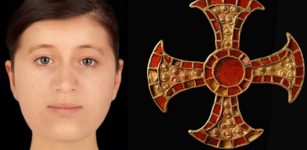 Lifestyle And Face Of 7th-Century Anglo-Saxon Teen – Reconstructed
Archaeology | Jun 20, 2023
Lifestyle And Face Of 7th-Century Anglo-Saxon Teen – Reconstructed
Archaeology | Jun 20, 2023 -
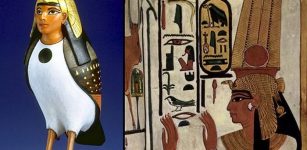 Why Were Ba And Ka Powerful Elements Of Soul In Ancient Egyptian Beliefs?
Egyptian Mythology | Apr 21, 2020
Why Were Ba And Ka Powerful Elements Of Soul In Ancient Egyptian Beliefs?
Egyptian Mythology | Apr 21, 2020 -
 Coral Castle Is Among Most Fascinating And Mysterious Buildings In Florida
Featured Stories | Sep 17, 2018
Coral Castle Is Among Most Fascinating And Mysterious Buildings In Florida
Featured Stories | Sep 17, 2018 -
 Forbidden Knowledge: Secret Ancient Gates Of The Shining Ones – More Surprising Discoveries – Part 3
Ancient Mysteries | Jul 19, 2019
Forbidden Knowledge: Secret Ancient Gates Of The Shining Ones – More Surprising Discoveries – Part 3
Ancient Mysteries | Jul 19, 2019 -
 Face Of Norwegian Boy Who Lived 8,000 Years Ago Reconstructed
Archaeology | Mar 16, 2023
Face Of Norwegian Boy Who Lived 8,000 Years Ago Reconstructed
Archaeology | Mar 16, 2023 -
 Evidence Of Ritualistic Gatherings 35,000 Years Ago Found In The Manot Cave In Galilee, Israel
Archaeology | Dec 12, 2024
Evidence Of Ritualistic Gatherings 35,000 Years Ago Found In The Manot Cave In Galilee, Israel
Archaeology | Dec 12, 2024

